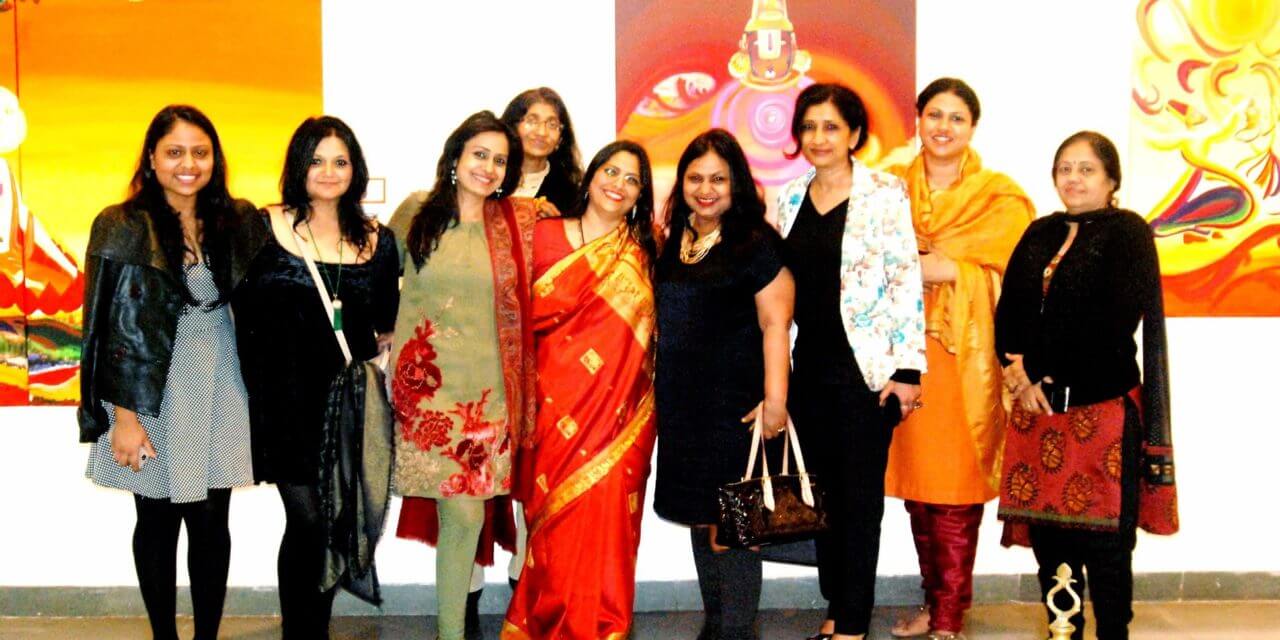Sitting around Babaji, though unable to decipher the reason why, we were all feeling light and happy. In the contrasting setting of modern women clad in jeans and this starkly dressed Kapali Baba, the discussion of relevance of fasting in modern times ensued. While none of us had any issue with the benefits of fasting for health and medical reasons, we did observe that from the religious point of view all fasts were for the males in society. Why is that women are only expected to fast for men Babaji, one of us protested? It is either Karva chauth for the husband or Hoi for the son. Why don’t men fast for women?
“But they are supposed to, he said. What do you think Navratras are? He went on –
The 1st Navratri is for Mother Earth, Dharti Ma ke liye. The 2nd is for Dhai Ma,the woman who did the delivery and is responsible for cutting your Umbilical chord. The 3rd is for Prasooti Ma, the woman who lives in quarantine with you for forty days after birth in order to ensure that you are not bothered by germs from the outside environment and your immunity develops.(Modern medicine too ratifies this need of maintaining utmost hygiene and limiting contact for the first six weeks, especially of caesarean babies). The 4th is for the janam dene waali Ma, the mother who gave birth to you. The 5th Navaratri is for the sister. The 6th is for the sister’s daughter, that niece who brings so much joy into your life. The 7th, the Kalratri is for the wife, the Consort! The 8th is for the daughter and the 9th for the Daughter’s daughter, i.e.; your granddaughter. Through these days, all aspects of relationship with women through generations are revered and celebrated.”
It amazes me that we have lost this context. Not only is the aspect of fasting for the sake of giving one’s body rest through eating lightly forgotten, but also the religious garb that it was clothed in, in order to make it more relevant is no longer known or understood.
Infact, do we even understand religion anymore? What we think is religion is actually a process to teach science to People, much like the Montessori Method of teaching skills to little kids.
Here is a peek into the scientific co-relation of the Nav Durgasto the nine months of pregnancy. We did always know that pregnant women were special and sacred, but this analogy was a revelation to me.
The 1st Durga is Shailputri, Daughter of the Mountains. That is the period when the Epidermis has been prepared to host the fertilised egg. The 2nd is Brahmacharini. Pregnancy discovered, time to celibate! The 3rd is Chandraghanta, with a crescent moon on her forehead, the shape of a fetus at that time of a pregnancy. The 4th Durga is Kushmanda, this is when Kush like hair and teeth begin to form in the baby. The 5th Durga is Skandamata, Skanda meaning earth, the earth element is making itself visible in the fetus the skeleton is hardening from rubbery cartilage. The next is Mata Katyayni, the period when the baby’s immune system is developing. Next comes Kalratri, the eyes of the fetus have opened and the baby is very active now, kicking away. It is also one of the most critical periods in a pregnancy. Mahagauri, who is shown as pristine white is the next, a period of peace, clam and rest for the baby. The final is Siddhidatri, known to grant Siddhis and having supernatural healing powers. Could these supernatural healing powers be about harvesting stem cells at the time of birth?
I often hear people saying that religious renaissance is being witnessed. But does keeping fasts which include eating heavy thali meals at modern eateries and performing rituals without any understanding of their essence constitute resurgence of religion or does it indicate further degradation? I suppose each one of us has to evaluate that for ourselves!
How then would i interpret the Navratras.
Here is my take:
Let the fasting be about eating light meals and preparing the body for the onslaught of the winter that lies ahead. Instead of eating fried and heavy vrat vala khana, follow a specific diet plan that is about giving one’s system rest.
By being the best brother he can be let every man celebrate his sister and the navratra that marks that relationship. In every role of a man, as a Brother, Husband, Father, Uncle, Son, may every man be grateful for having such a relationship in his life. (The Dhai Ma and Prasuti Ma are the Modern Day nurses, no wonder they too have been addressed as Sister in India for a long long time.)
For those women who are fasting, we are the embodiment of Shakti, let these navaratras be an opportunity to tap into the Source. Let the Men in our lives witness the splendour of the unmanifest Shakti in our manifest versatile forms as the Mother, Sister, Wife, Lover, Niece etc.
Regarding the symbolism of the Navratras with the pregnancy cycle, it is yet another opportunity to understand that we need to interpret the religious practices and rituals in a more objective and scientific manner.














